“When we fail to seek new perspectives, stagnation creeps in.” Through realistic charcoal and graphite drawings, Neville Barbour honors people such as the Fon amazons, the Tchamba veneration, and contemporaries alike.
BY NEVILLE BARBOUR
All humans enter this world as beings of pure light. Life introduces us to the shadow. As conscious beings, we must struggle to create a balance between these two opposites. I create art that is a balance of shadow and light. I seek to capture this ever-changing equilibrium in hopes that we may lose ourselves in the moment. That we may find some peace within the struggle. Our existence cannot be simplified. If you reduce the world to black and white, there will always be gray.
Humanity is also full of ideals and contradictions. This imperfection is what makes us human. When we fail to seek new perspectives, stagnation creeps in, causing a failure to evolve past our current selves. I use art to tell stories that capture the full spectrum of what it means to be human. Being human is hard. It is even more difficult if we strive to be conscious. Our pursuit of happiness is punctuated by our constant struggle to live in this world. I use art to give framework to this feeling of drive and failure.
Humanity speaks through ambivalence. I know this ambivalence well. The people that stole my past died long ago but it still affects me. As a person of color without an immigrant story, I struggle to redefine a sense of identity. I study the past to redefine my perspective. Through my graphite drawings, I make art that brings my past and others’ past alive. I search for the black, the white, and the “indelible” gray.
Graphite Drawings by Neville Barbour
“Lord of the Flys”
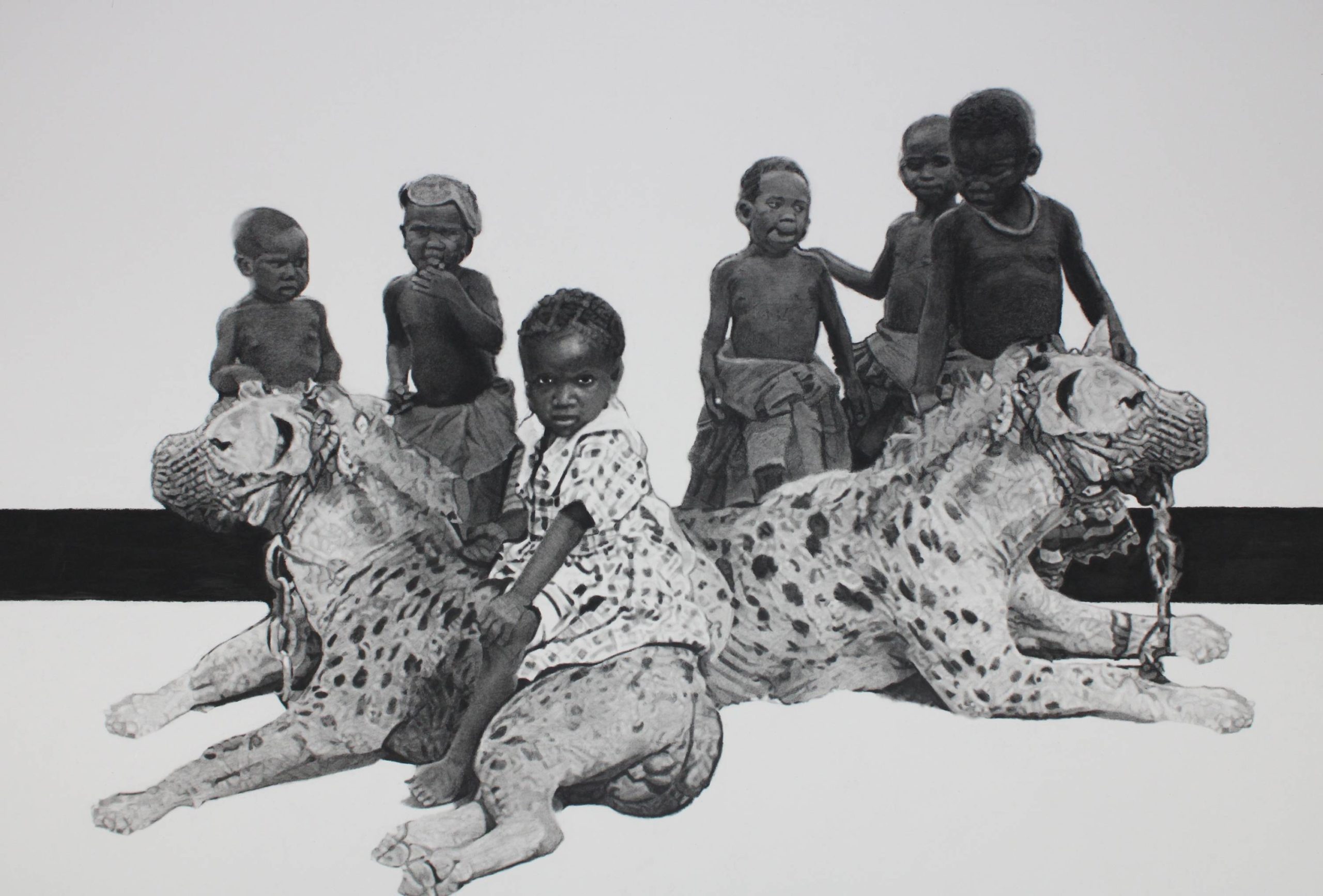
When conceptualizing this piece, I was generally reminded of the protective female forces in my life: My mother, my sister, my wife…I even thought of my niece, who somehow manages to bully her older brother while also being his strongest advocate.
The hyenas lend themselves to the protective nature of this concept because of their matriarchal nature.
“Janus”
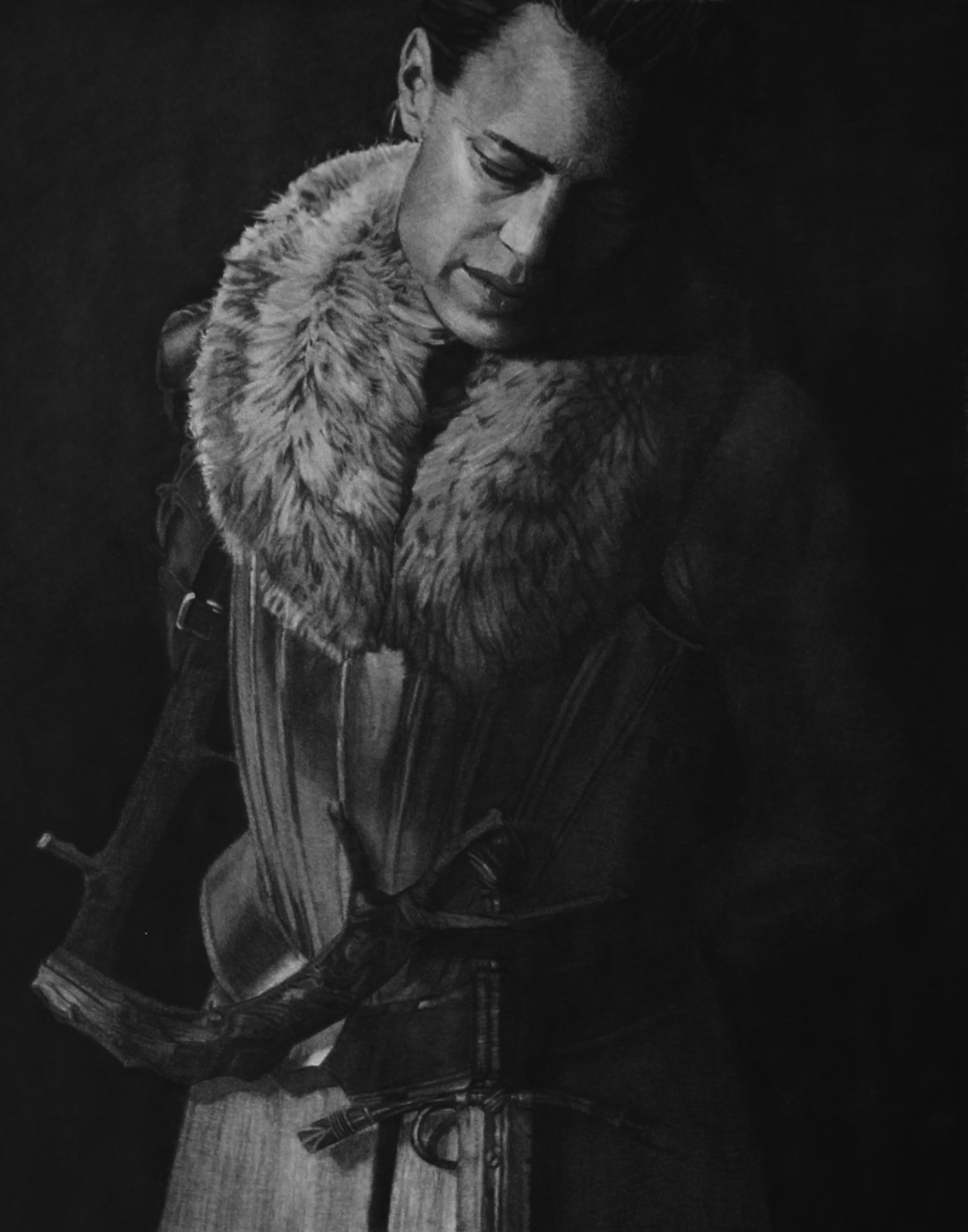
To me, mythology is idealism applied to a world that’s less than perfect. With this in mind, I wanted to make a series that showed this dichotomy. The series begins with a mix of beauty and imperfection.
Who better to represent two opposites than Janus, who is often depicted as a two-faced god with each head facing in the opposite direction. It is where we get the term “Janus-faced,” representing two sharply contrasting aspects or characteristics. Many view the term as derogatory, but perhaps that negative connotation is a reflection of our desire to rid ourselves of the things that make us human.
As a work, “Janus” as a work attempts to merge the idea of dichotomous characteristics in life. Janus is strong, yet weak. Beautiful, yet marred. Shy, yet brave. Unique, yet mundane. Dark, yet light.
“Xevioso”
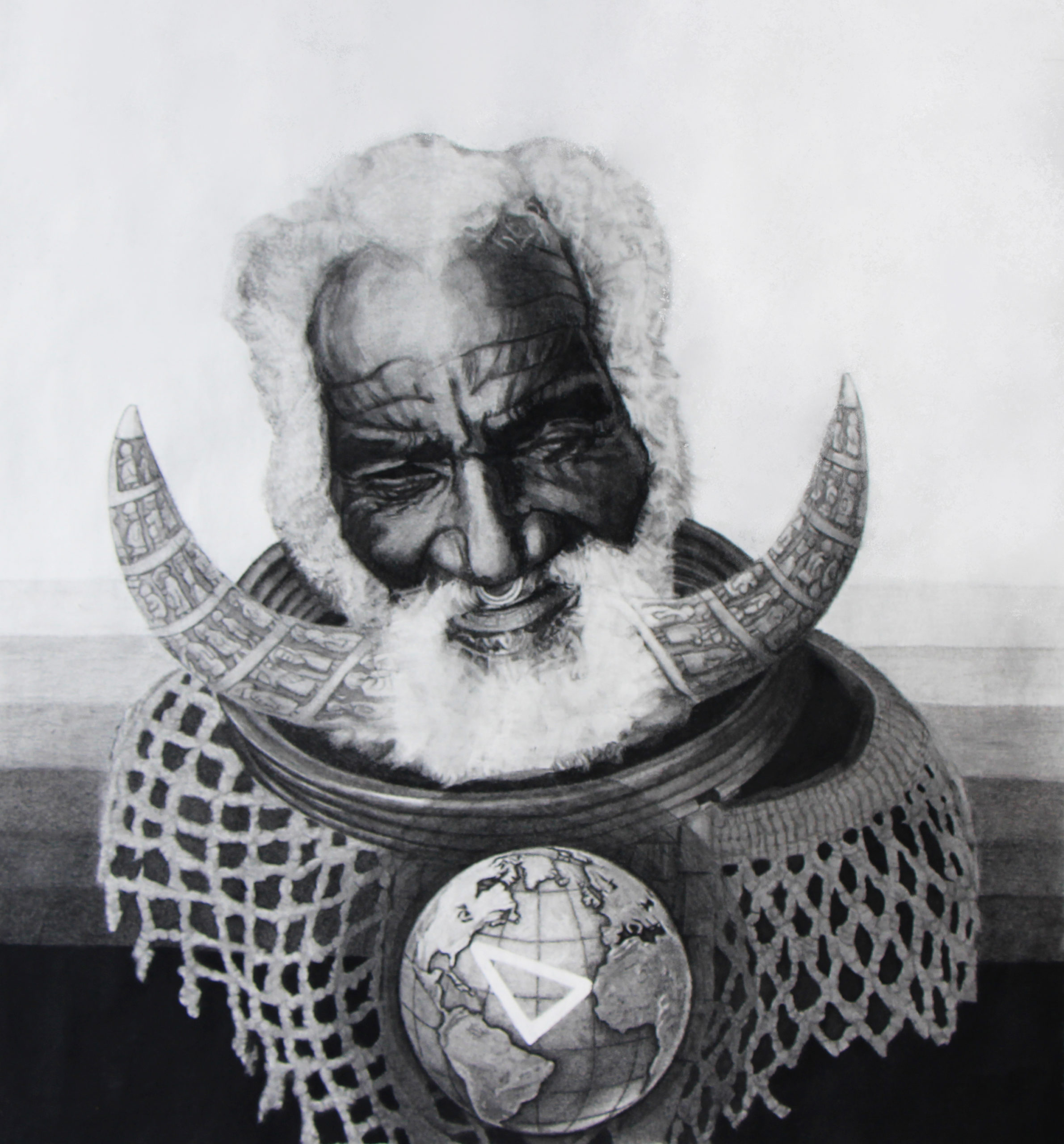
I wanted to capture the alienation that I’ve been made to feel about my culture. I used the faces of unnamed slaves to create the visage of a deity that my ancestors worshipped long ago. I wanted to show how the effort to erase our past has left us with irreparable damage. I wanted to show that in spite of that, we’re still enduring.
“Thoughts for Idia”
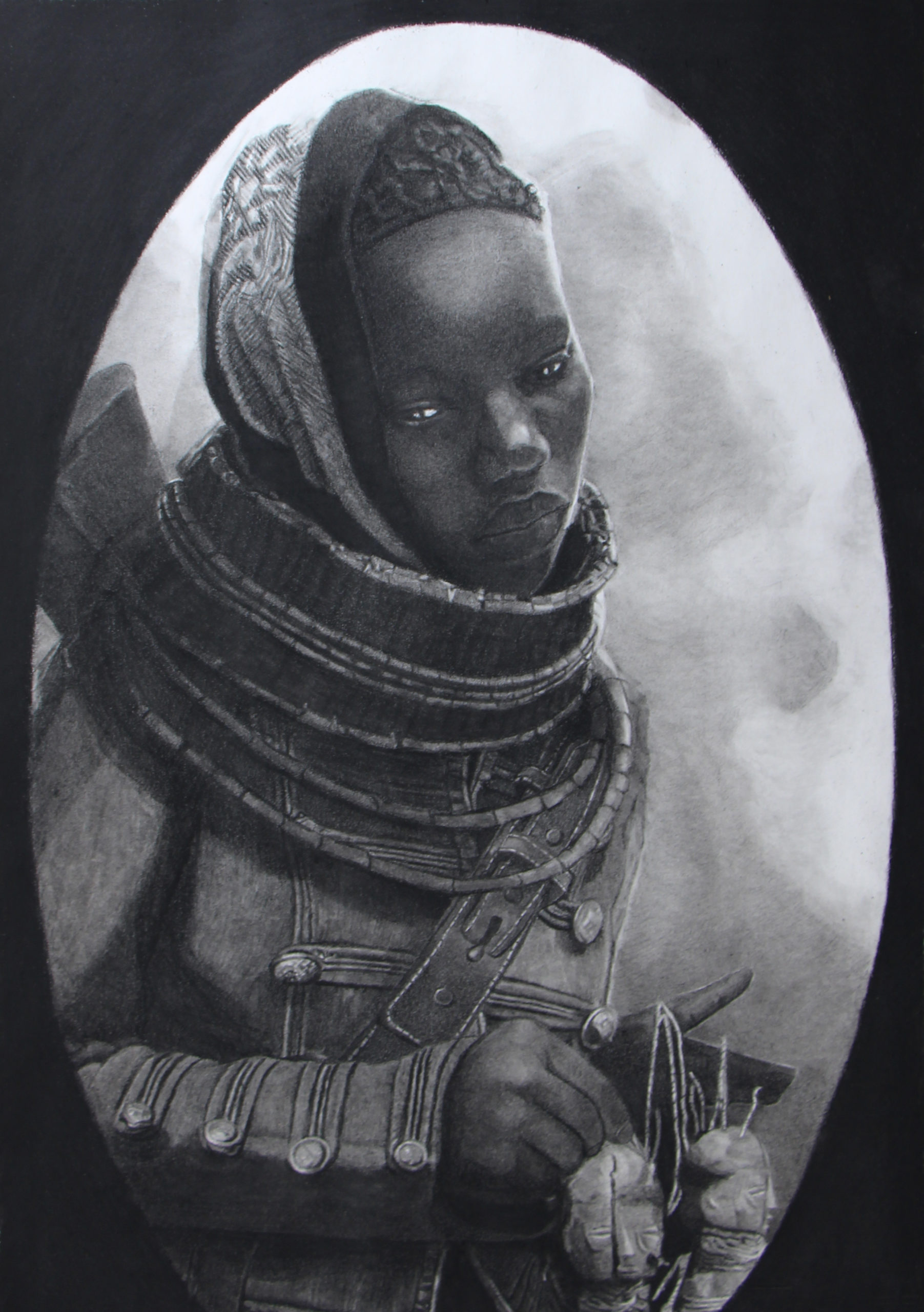
Part of growing up is understanding the meaning of ambivalence.
As human beings, we are all bound by our fallibility and our personal pursuit of what we see as a better world. My amazon* stares ambivalently while holding two boccio dolls in hand. Boccio dolls are West African fetishes imbued with special powers by Vodun practitioners. They were sometimes given to slaves to protect them on their journey to the new world.
*The Fon amazons were an all female military regiment in the kingdom of Benin from the 17th-19th century. Housed in the palaces of the king, the amazons lived outside of the confines of a male-dominated society. But this privilege came at a great price as the Fon were “more than most African states, dedicated to warfare and slave-raiding” (Stanley Alpern, 1998).
I wonder, “what does one do when privilege comes at the price of misfortune?” I’d like to imagine that the response differs by the individual, regardless of race or gender.
“Dahomey in the Café”
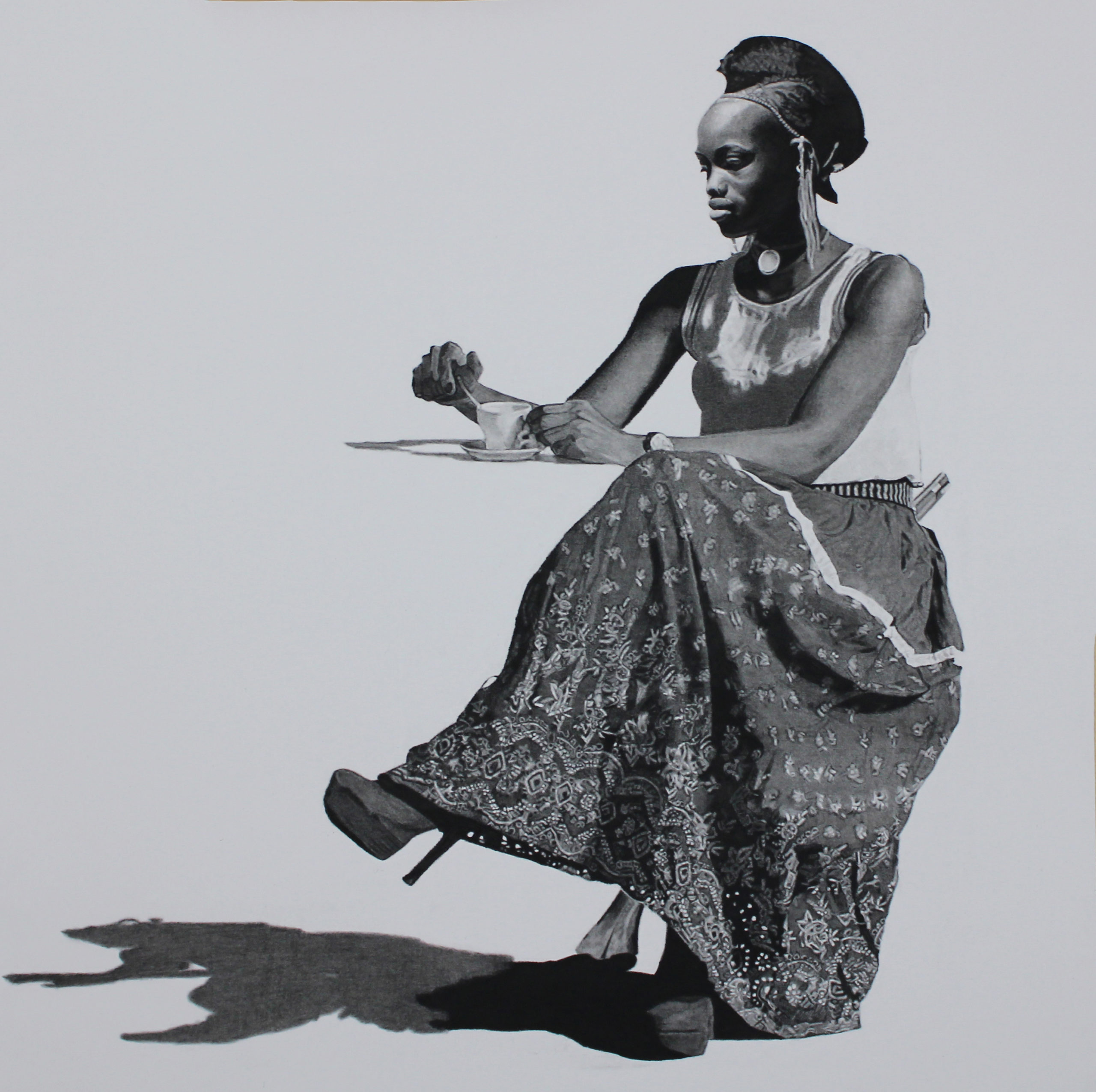
I chose the Dahomey amazon as the subject for this piece because she embodies the archetype of a confident woman. As part of an elite military regiment, these amazons lived outside the confines of a male society and claimed status and privilege in a society where, otherwise, they would have had none.
Resilient in its shape and form, the triangular composition of this drawing gives it the “fortitude” to stand on its own in a sea of negative space. And thus it justifies its existence, not by seeking to overwhelm the space but simply to blend with it, syncretically.
“Fisherman of Souls”
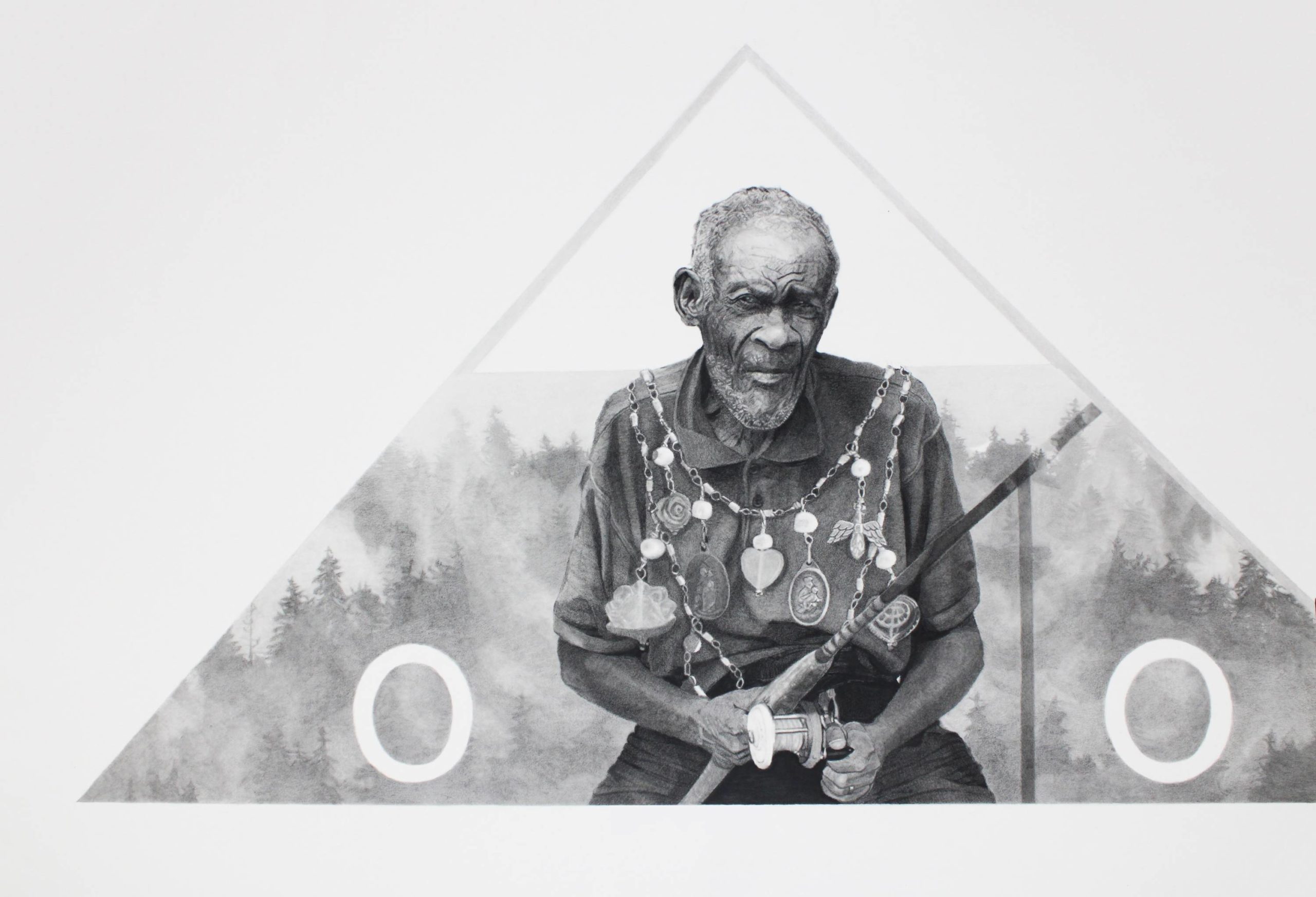
“The Tchamba veneration cult was developed to heal the wounds of slavery in West Africa. The spirit of the cult is venerated both by descendants of slave owners and by those who were enslaved” (from Dana Rush’s “Vodun in Coastal Benin”).
In essence, it is an apology, acknowledgment, and quest for salvation.
It’s not hard to understand why slaves were able to adapt this concept to the new world during the transatlantic slave trade. While perhaps not a perfect solution, it is an attempt at redressing past problems within the current generation.
“You Remind Me”
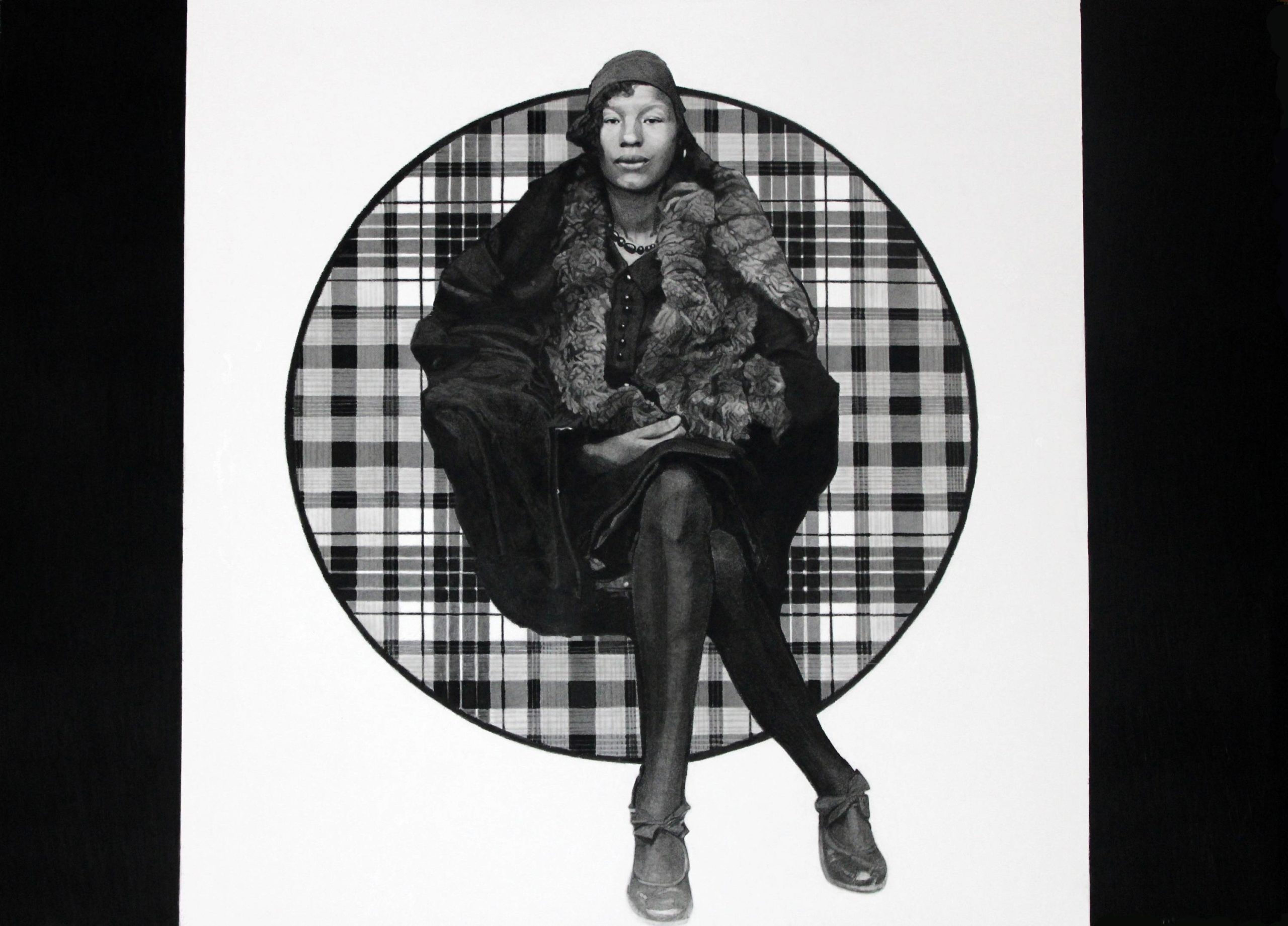
“You Remind Me” is a contribution to the mosaic of human experience, which is a compilation of emotion and memories. Memories are unique because they can never be re-lived. They exist in an almost mythical plane, heightened by whatever emotion we’re feeling at the time. I’m interested in expressing those sublime moments, which would lose their value if they lasted forever. I try to give these transient moments the space to be grander. Our memories exist to entice us to make more. It is our gift for living.
See additional realistic graphite drawings and connect with Neville Barbour:
Website | Instagram
- Visit PaintTube.tv to learn how to paint portraits and figures in the style of contemporary realism, and much more.
- Join us for the next annual Realism Live virtual art conference and study with the world’s best realism artists.
- Become a Realism Today Ambassador for the chance to see your work (paintings, graphite drawings, colored pencil, etc) featured in our newsletter, on our social media, and on this site.




